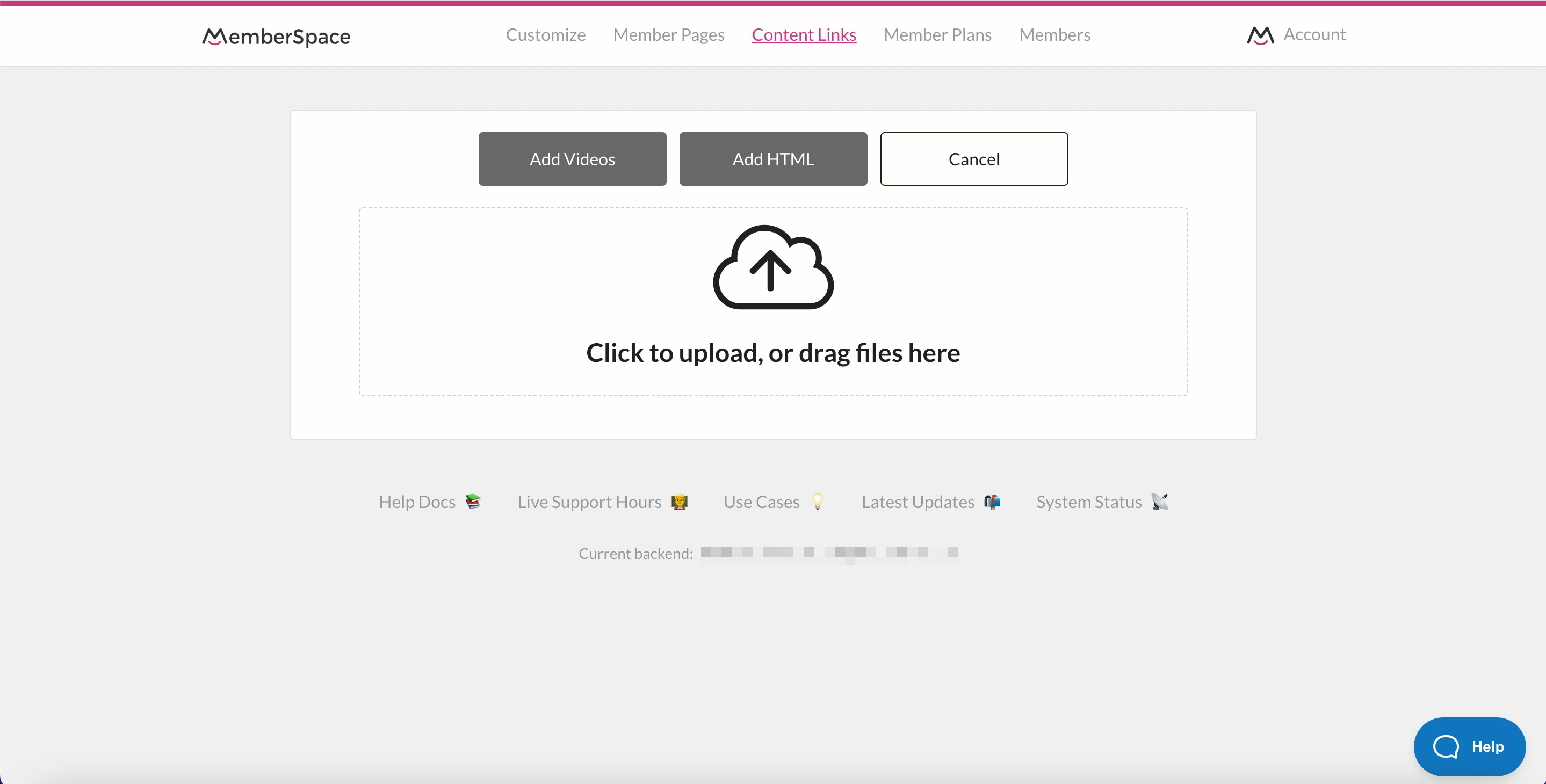Finding a membership business idea and customer niche is an essential first step to starting a membership business. You’ll need to know exactly what you want to sell and determine who will be interested in signing up for a membership.
It’s easy to become overwhelmed with endless possibilities for your membership business. But the more detail you can apply to your idea and the more specific you can be with your target audience, the more likely you’ll be to sell the right product or service to the right people. And that’s why we’ve put together these guidelines to help you successfully narrow down your ideas to find the right topic and customers.
Stop guessing what customers will buy

Prior to MemberSpace, our main focus was on the success of our web consulting business, which we started in 2011. For years, we tried to create a membership business without success.
The first idea we had (called Storytime) was meant to help web consultants scope out client work better. Our three-person team spent six months building it before we ever showed it to anyone. When we finally had a consultant friend of ours look at it, he simply responded with, “Oh that’s kinda cool.” Not exactly the response we were hoping for…
We were convinced Storytime was a terrific cutting-edge software tool that would be incredibly useful for other web consultants — and yet when we showed it to someone in our theoretical target market, they weren’t very enthusiastic about it (much less willing to pay us a dime).
We tried at least a half dozen other ideas that seemed terrific, but time and time again we struggled to find anyone who was excited about what we built — or willing to pay for it.
After some time, we were able to get one paying customer for an idea we had, but they canceled less than a year later. The only real success we’ve ever had with a recurring membership business is MemberSpace, and the reason it’s been successful is counter to what you’ve probably read, watched, or heard about successful membership businesses.
We never actually came up with the idea of MemberSpace; we simply listened and read what people were already publicly complaining about — a lack of membership functionality in Squarespace!
Listen to what people are already saying

After hearing numerous times from our various Squarespace clients that they wanted some kind of membership functionality, I went to Google and started searching for solutions. There were a couple that popped up, but most of their websites looked sketchy or not exactly geared toward what I was looking for (membership functionality on Squarespace).
I then started combing through the Squarespace questions and answers forum. They had a feature that allowed you to sort question topics based on which ones the community had voted were the most important. Towards the top of the list was the ability to have member-only pages and content. I then looked at the total number of views for this topic (100K+), and it blew everything else out of the water.
At this point, it became clear there was a HUGE need for this functionality. After reading through literally every topic on the Squarespace forum about memberships, I understood the existing solutions to the problem were lacking in some combination of features, user experience, or pricing terms. The community felt the problem was not being solved well, but they were willing to try new solutions and pay for them. This research and understanding led to the birth and launch of a very basic version of MemberSpace back in December 2015.
The reason I gave you all this backstory is simply to illustrate the point that we never actually came up with the idea of MemberSpace. This wasn’t some epiphany or stroke of genius — the idea was simply obvious after doing extensive reading and research on the Squarespace forum.
Don’t build something no one wants

If you’re trying to start a membership business, you need to begin not with an idea you pulled out of your head, but with research.
Say you want to create a members-only course to teach people how to eat healthier. You could…
- Easily build a website in Squarespace, record a handful of recipe videos using your iPhone, and write a few blog posts about eating more plant-based whole foods and avoiding processed crap.
- Use a 3rd party tool like MemberSpace to lock down this member-only content on your site and charge $20/month for access.
- Post a link to your new website on Facebook, Twitter, Instagram, etc.
- Text your friends and family letting them know about your launch.
- Tell everyone at your gym or yoga class about the course.
But inevitably, you’re going to run into a serious problem — you didn’t do enough research.
- How do you know $20/month is a good price point?
- How do you know people even want recipes to eat healthier (it’s easy to Google healthy recipes)?
- How do you know people don’t already know they should be eating whole foods and avoiding processed junk (that’s becoming common knowledge)?
If you don’t know the answers, then your business is built on a guess. And sure, you could have guessed correctly, and some customers may sign up. But if you’re trying to create an actual sustainable business (one that might eventually be your full-time job), your foundation can’t be built on a guess.
A different approach to your membership business might look something like this. You join the top Facebook groups that revolve around healthy eating. You also join the top groups that revolve around weight loss. You actively read and participate in all the discussions for a couple of weeks. You subscribe to the top 10 most popular blogs about healthy eating (that are aligned with your philosophies on the topic) and the top ones that discuss dieting and weight loss. Again, you actively read every comment for every post and engage with others.
After actively reading and participating in these discussions for a couple of weeks, you’ll start to see some obvious patterns emerge. Maybe you’ll hear people talk specifically about how their diet affects their skin. Maybe they’ll express how hard it is to lose body fat. Maybe they’ll say it’s too expensive or time-consuming to eat healthy. Whatever it is, pay attention and write down the patterns you observe. These top complaint patterns will be what you base your business model and services around.
Yes, this is time-consuming. Yes, this is tedious. But this is the hard work others aren’t willing to do and will give you the best chance for actual success.
What to do with the patterns you observe

Ok so at this point, there should be a handful of popular recurring complaint patterns from the audience you’ve observed. Perhaps the patterns are counterintuitive to what you would have guessed. Maybe they are exactly what you figured. Whatever the case, the point is this is real data. This is information you’ve gathered by reading and listening to the exact group of people you’re trying to help. This information was not solicited or biased — it was publicly observed by you as a third party. There are no guesses or ideas here — just concrete needs.
Now think through your handful of patterns. What group of people do the patterns mostly apply to? If you can’t think of a specific group (e.g. new stay-at-home moms, undergraduate college students, Crossfit gym owners), then reduce your handful of patterns to the one or two most popular ones. The key here is to keep your initial customer niche VERY small and specific. We all have the urge to increase the size of our customer niche because we fantasize about the idea of having thousands or millions of customers. But the harsh reality of starting a membership business is most people don’t make it to even 100 paying customers.
Think really small for your initial niche

The smaller your initial customer niche, the easier it will be to find and target them with your services. Plus the services you offer them will be so specific to their needs that they’ll feel like you truly understand them and are the right solution.
Try this thought experiment — say you needed to fix the transmission on your Honda Civic, and there were two garages equal distance from you. One garage provides general services (oil change, tire rotations, transmission work, etc). The other garage specializes only in transmissions — that’s all they do. Your choice would be obvious, wouldn’t it? The same logic should be applied to your initial customer niche. You don’t want to appeal to everyone; you want to resonate deeply with a select group who will actually buy what you’re selling.
In the future, you can always expand your niche as you learn more about your market and other unmet needs. But for now, you want to set yourself up for success by eliminating variables and focusing on a specific group. The more specific the group, the easier it is to find them and speak to them in a language they understand and relate to.
If you’re trying to target new stay-at-home moms, for example, you could use phrases like, “It’s tough being a brand new mother — everything in your life seems to change”, as opposed to, “It’s tough being a mom.” The first phrase will resonate because it’s speaking to an exact group of people using words they likely have thought in their heads. The second phrase is just generic and likely won’t resonate as much with your particular customers. The first phrase is targeted to a specific niche, whereas the second phrase is targeted to a much larger and less specific group.
Write down your customer niche; it should probably be at least three words.
Focus on getting your first customer

At this point, you’ve done your research on your audience and understand the top problems they are facing. You’ve narrowed down your audience to a small and very specific niche. Now, you need to decide what product(s) or service(s) to offer them.
As is the theme in this article, keep it simple. With your niche’s top problems in mind, think of the simplest way to solve the first one or two problems they have. In the future, you can always expand your services to solve more problems. You have to remember this is just the start of your first phase of business. There will be MANY more phases along the way, and your business will continue to evolve. But what you need to focus on right now is the simplest possible way to solve the top one or two problems your niche has. This focus will set you up for success and increase the probability that an actual person will give you your first dollar of revenue and thus become your first customer.
Until you have your first customer, you are just playing business. It’s just a hobby. Asking people to give you money for something is the only way to get real feedback regarding product-market fit (i.e. do people actually want what you’re selling). The quicker you can get to this type of real feedback, the quicker you can adjust your business to what your niche actually wants.
How to choose what service(s) to offer
When coming up with your service(s), don’t pick a solution that is going to take months to develop or cost over $1,000. Obviously, these are just rough guidelines, but they will put your mind in the right frame of thinking. You need to pick something simple so you can begin a feedback loop with actual prospects and customers ASAP. Nothing else matters until you get your first dollar of customer revenue. Everything else is just a distraction or procrastination from the hard work of getting real customers. Don’t fall into that trap!
For example, let’s say you are creating a video course to teach your niche how to become better photographers. You may think you need to go out and buy an expensive camera, tripod, and other accessories. You may think you need to buy professional lighting equipment and backgrounds so your videos look good. You may think you need to record dozens of hour-long videos. Saving up (or going into debt) for all that equipment plus the time it will take to record and edit dozens of videos could take you six months or more! All before you’ve earned one dollar of customer revenue…
I’d argue this is the completely wrong approach.
Do you have a smartphone that was purchased in the last few years? If so, the video camera on it will record in at least 720p which is high definition. You can jury-rig a tripod from household items or simply position your phone on your desk at the right angle so your wall is behind you (i.e. a nice simple background). No need to buy anything. When it comes to videos, you don’t need a dozen. How about starting with three 15-minute videos explaining the basics of using your smartphone camera and fundamental tips for becoming a better photographer? You can have a headline somewhere saying, “More videos coming soon!” But based on your research, your initial three videos should be valuable and cover exactly what your audience is looking for.
Yes, you will need to make more videos, but only after you’ve tried to sell this initial minimum viable product (MVP) to people. An MVP is the smallest, least expensive, product/service that solves an actual problem for your customers. An MVP is exactly how we started with MemberSpace. When we launched, all you could do was choose which page URLs were protected on your site. Your visitors could then create free accounts (name, email, password) to access the protected pages — that’s it.

After you add your videos as Content Links, it’s simple to link out to those videos on your membership website or to embed them directly on any web page. And when you’re ready to expand your photography video course, you can add additional (unlimited, actually!) Content Links at any time.
Only pay attention to real feedback from prospects
The feedback you’ll get from real prospects and customers will be essential. You’ll learn if your price point is too high or too low (read about how to choose the right pricing and convert website visitors). You’ll learn which topics your early customers want to know more about (i.e. those are the exact videos you should make next). You’ll learn if the copywriting on your website is confusing (we’ll discuss website design in a future article). You’ll learn if your initial three videos are in fact not enough content or if the topic of the videos missed the mark.
The feedback loop described above can only be attained by trying to sell an actual product to actual people. The feedback friends, family, and strangers give you about your business idea (aka hobby) is not helpful, and often times people are just trying to be nice to you. They are not your customers. Getting feedback from anyone who is not in your target niche (and, therefore, you didn’t ask for their credit card) will be inherently misleading at this phase of your business.
You should be singularly focused on talking to actual prospects and trying to convert them into customers. We’ve found through our journey with MemberSpace, this is the only way for real learning and business growth to occur.
Deciding on your business idea and establishing your customer niche is a pretty significant first step. But don’t let this decision hold you up from progressing toward the launch of your membership. While you’ll need to do some research to find your specific audience and discover exactly what it is they need, you can always make tweaks to your offerings and niche along the way, if needed.
Regardless of why you are starting a membership site, MemberSpace’s team of experts and flexible membership software have all the essential tools, know-how, and integrations you need to get going and keep growing. Learn more and start using MemberSpace for free today.




